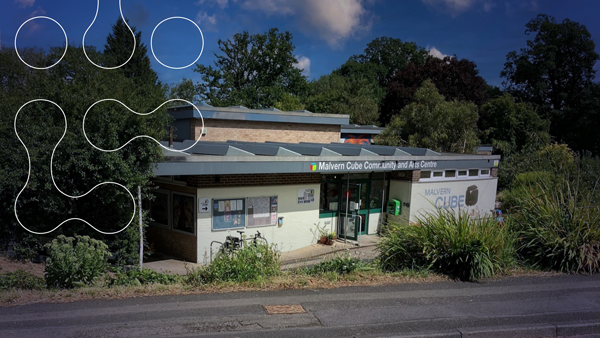The article below was written by Biological Preparations and published in Tomorrow's FM, February 2025 Edition, pages 24-25
Facilities management businesses have long been integral in supporting other organisations' objectives. However, with increasing pressure to reduce costs across industries, including FM, it is crucial to assess the evolving market and explore how FM businesses can strategically leverage cleaning solutions to navigate upcoming challenges.
Market Overview: Why many are trying to cut costs in cleaning
A 2024 study showed that 5.4 million SMEs are implementing cost-cutting measures, not to drive financial growth, but to remain in operation. To put this into context, in 2023, the Department for Business and Trade reported there were 5.6 million private sector SMEs in the UK, meaning that nearly all businesses are working to cut down on costs.
But this cost-cutting is not just exclusive to SMEs. Another study conducted at the end of 2024 showed that CFOs of some of the biggest UK companies are primarily focusing on cost control.
Why? In the last few years, businesses have witnessed rising costs from various factors, including changes induced by Brexit, which increased import costs by 11.5% (National Statistics 2022). New budgets, like the expected increase in NICs in April, rising wages, and increased prices throughout the value chain—from raw materials to energy—are also contributing factors. Additionally, geopolitical tensions have created an uncertain business landscape, prompting nearly all businesses to look for ways to cut costs.
Domino Effect: How Can Cost Cutting Affect FM Businesses
Businesses in FM are central to the success of many modern business operations, working with each site to protect assets, wellbeing, and safety. Although an important industry that helps businesses achieve a wide range of objectives, added pressures to reduce costs will have a knock-on effect on FM stakeholders.
Suppliers With increased costs for supplies, materials, and operations on their end of the value chain, many manufacturers or suppliers will pass some of these added expenses onto their products. This can increase the operational spend for FM providers before even reaching their customers.
FM Businesses Under the pressures of legislation and wider budget changes, FM businesses may add pressures on their cleaning teams, cutting times for operations and resources while still expecting an elevated standard of cleaning to maintain customer relations. Many might look to change manufacturers to further reduce or at least keep costs the same, seeking cheaper alternatives that require more intensive labour, have higher hazard classifications, and could lead to increased illness in an already stretched team. These changes might not align with current business commitments like net-zero or Scope 3 reductions.
Customers: FM Customers are looking to reduce costs, so they will seek more cost-effective cleaning operations. When reviewing these operations, businesses will analyse service quality, staffing, frequency of maintenance, a proactive rather than reactive cleaning routine, how they fit into their wider objectives, and general satisfaction. Without excelling in these areas, FM businesses could be at a competitive disadvantage, leading customers to seek other more cost-effective FM services or even consider in-house services
Tips to Strategic Cleaning: Costs, Operations and Customer Satisfaction
In facilities management (FM), balancing cost reduction with operational efficiency can be challenging. A strategic approach to cleaning can help achieve this balance without compromising standards or customer satisfaction. Cost-cutting measures that involve lower-quality chemicals or products may hurt cleanliness, safety, and brand reputation, overall putting that business at a competitive disadvantage.
Rather than solely focusing on cheap, harsh chemicals, the key lies in adopting strategic technologies that provide long-term value.
Evaluate Cleaning Technologies: Effective cleaning products do more than just clean—they offer lasting benefits. Some products with residual cleaning capabilities reduce the frequency of cleaning needed, maintaining high cleanliness standards without overburdening cleaning teams. Biotech cleaning products, such as BioHygiene, create a natural biofilm formation and offer proven long-term benefits by breaking down organic matter over time, ultimately reducing the need for frequent reapplications.
Cost and Operational Efficiency: Cost management involves more than just the upfront price. Consider the entire cost structure, from product per-use costs to labour time and waste. Ready-to-use (RTU) products tend to be more expensive on a per-use basis, while concentrated formulas—though pricier upfront—can be more cost-effective in the long term. These products often have higher dilution rates, which reduce consumption and costs, especially with proper staff training. Another way to save costs is by rationalising the cleaning product portfolio. Adopting multi-purpose products can simplify inventory management and reduce the number of specialised products needed. For example, BioHygiene’s core cleaning products are designed to cover up to 80% of cleaning needs, helping to reduce both costs and operational complexity for cleaning staff.
Technologies That Facilitate Deep Cleans: Deep cleaning is essential for ensuring compliance with health and safety regulations and maintaining asset longevity. However, deep cleaning can be resource-intensive, especially when daily cleaning tasks aren’t contributing to these efforts, leading to further overstretched cleaning teams. Technologies that work deeply into surfaces, such as biotech-based solutions, can reduce the time and labour involved in deep cleaning. Biotech products colonise surfaces with bacteria that break down organic matter at a molecular level—something traditional cleaning products cannot achieve. These products also address odours at their source rather than merely masking them, improving overall hygiene and customer satisfaction.
Future-proofing with Sustainable Eco-Technology: Sustainable cleaning technologies are an essential part of future-proofing FM businesses. Eco-friendly products that consider the entire life cycle of their environmental impact help FM businesses stay ahead of rising sustainability regulations and growing consumer demand. These technologies reduce resource consumption and offer long-term cost savings, providing a stable stream of products that align with business goals. Also, eco-technologies position FM organisations as partners in their clients' sustainability efforts, giving businesses a competitive edge while helping to build stronger, more environmentally responsible client relationships.
Next Steps for those in FM
Adopting a strategic approach to cost-cutting is essential for FM businesses to remain within budget and attract and retain customers. By auditing the products most frequently used, businesses can assess whether they offer both cost and strategic advantages, ensuring long-term operational efficiency. This lays the groundwork for optimising the entire product portfolio without causing excessive strain or disruption. Proactively addressing risks and maximising the potential of cleaning products will drive cost savings and enhance brand reputation, crucial in an increasingly competitive market. For expert strategic advice on cleaning products, please reach out to the BioHygiene team here.




